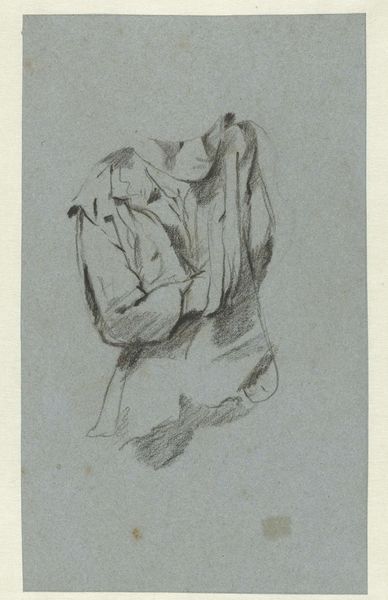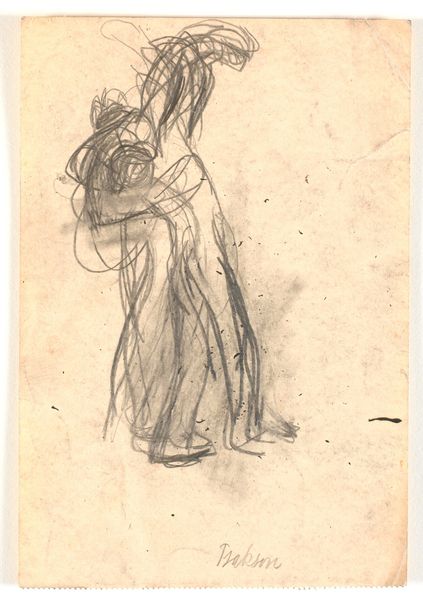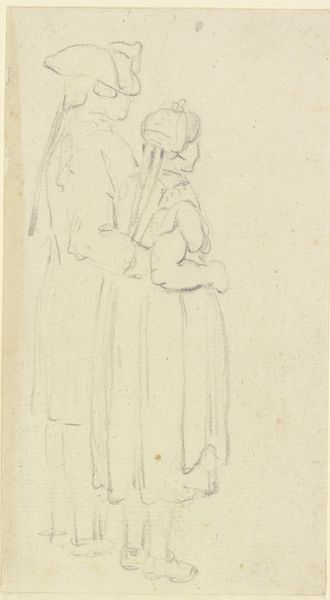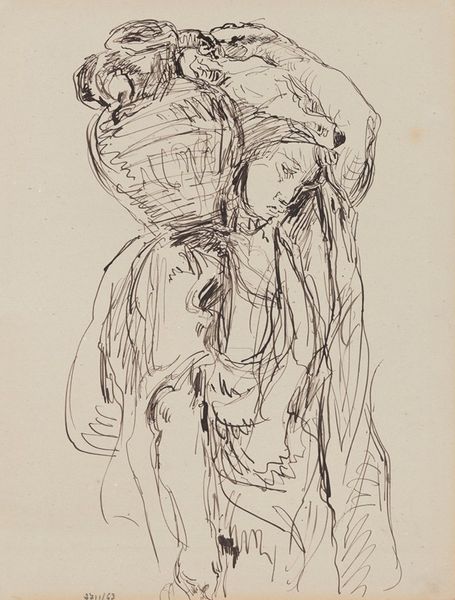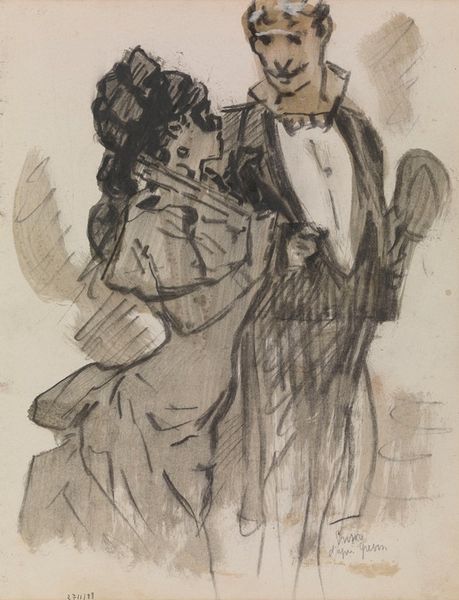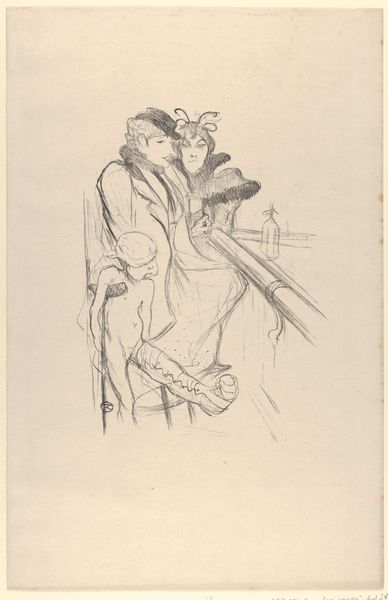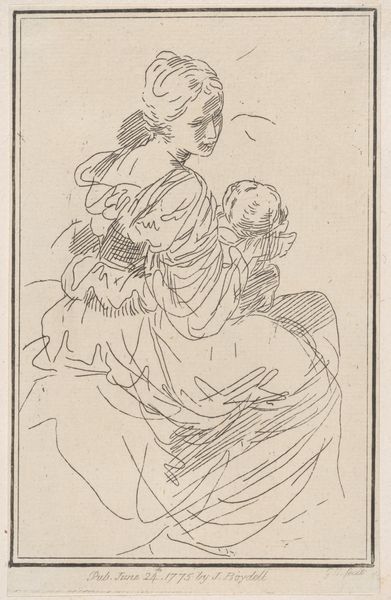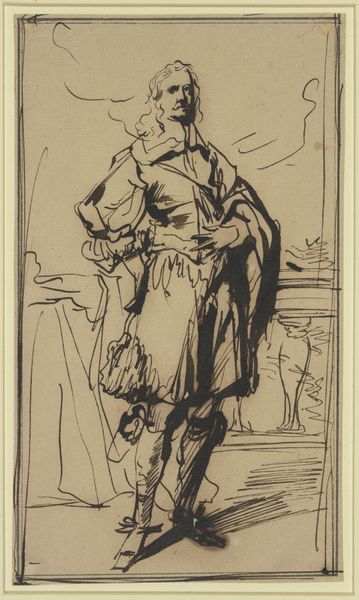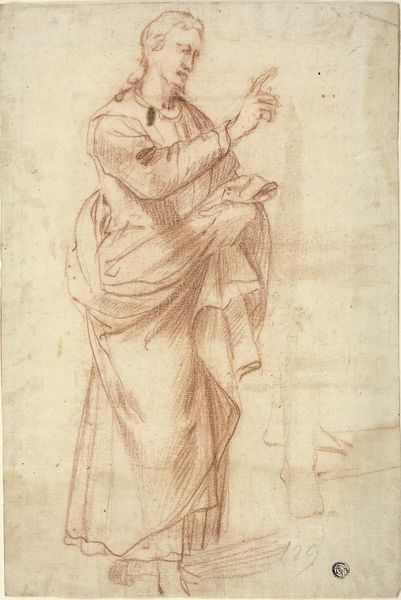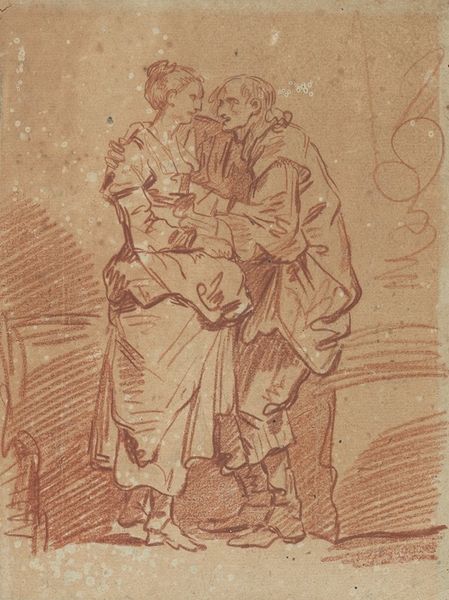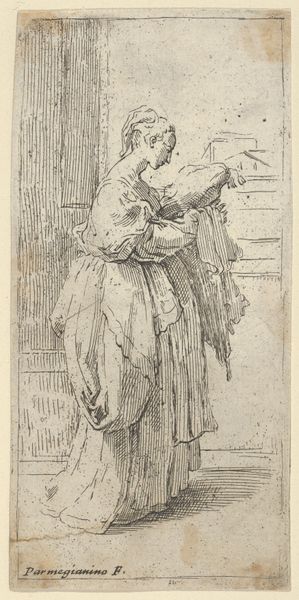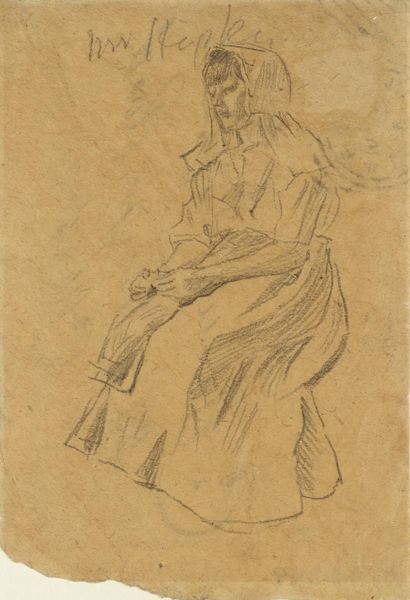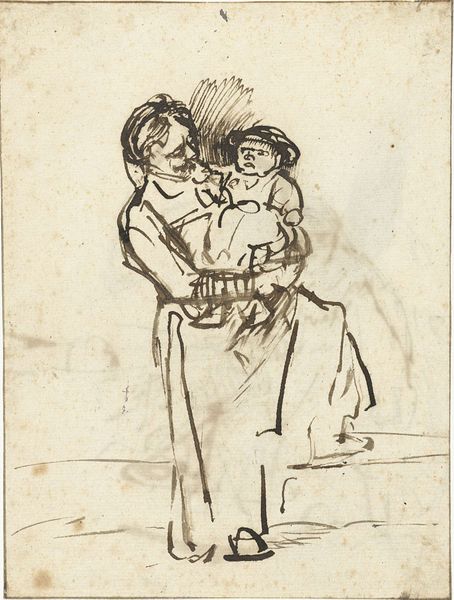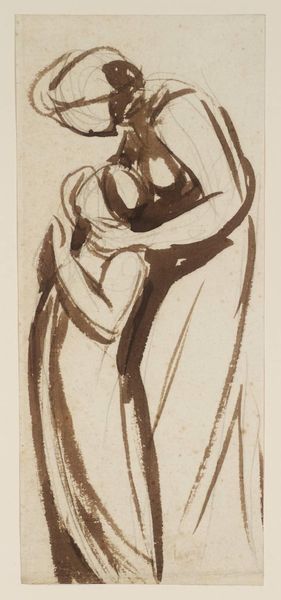
drawing
#
portrait
#
drawing
#
figuration
#
portrait drawing
#
genre-painting
Dimensions: 153 mm (height) x 101 mm (width) (bladmaal)
Curator: Let's discuss Nicolai Abildgaard's "A Seated Monk in Profile Facing Left", created sometime between 1743 and 1809. It's a drawing, currently held at the SMK - Statens Museum for Kunst. The material and process, the very act of drawing here… it feels immediate, raw. Editor: My first impression? Solitude. The sketch feels very internal. The monk, hunched and contemplating, creates a feeling of contemplative melancholy. What do you see when you examine it closer? Curator: Well, I immediately start thinking about the economics of artistic training and materials in the late 18th century. Ink drawings were often studies, exercises in preparation for larger, more 'important' paintings. Was this drawing meant for public display or private reflection? The quick, gestural marks—suggest evidence of his technical prowess, achieved through hours of practice. It's labor visualized! Editor: And the symbolic weight of the figure itself? The monk, of course, embodies religious devotion and a life separated from worldly concerns. But the pose is critical here. It's not idealized or overtly pious, but more introspective. The skull-like form he's holding perhaps signifies mortality, adding depth and layering symbolic meaning. Curator: Interesting observation about mortality! It makes me ponder the pigment source; perhaps sepia ink, derived from squid, another once living thing now material for creating art. The material quite literally holds traces of its biological origin. Editor: The overall impression is that this isn't just about religious symbolism; it's more about universal human themes: meditation, awareness of death, and a striving for something beyond the physical. The artist isn't portraying dogma. Curator: True. The medium supports the theme, allowing Abildgaard a freedom and expression unburdened by the weight or the expectations of producing larger paintings. There’s almost an honesty because of the immediacy, almost an act of translation from thought to line in one single movement of hand. Editor: Yes, this sketch offers a poignant look at spiritual self-examination. The image transcends its religious context and presents profound human reflections that touch us still. Curator: Exactly! Thinking about process, materials, technique allows us insight to both his hand and the conceptual frame underpinning his creative choices, allowing us to relate on several levels, too.
Comments
No comments
Be the first to comment and join the conversation on the ultimate creative platform.
